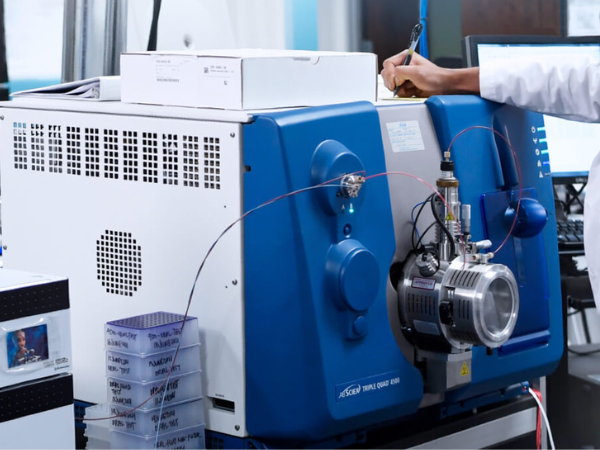Medical laboratories are constantly seeking ways to maximize efficiency and reduce expenses without compromising on quality. One often-overlooked option that can provide significant benefits is the purchase of certified refurbished lab equipment.
If you’re currently looking to upgrade or replace outdated instruments or equipment, read on below to learn more about why considering refurbished equipment is both a cost-effective and reliable option.
Why consider refurbished lab equipment over new?
When looking to invest in instruments or laboratory equipment, there can be reasons to consider buying new. Perhaps you prefer the latest technology with new features not found on older instruments. Maybe you want to avoid unforeseen problems that may arise with pre-owned equipment. Regardless of your reasons, however, there is one thing for certain — a new instrument comes with a high price tag.
There are many more reasons to consider buying certified refurbished equipment. Some of these are obvious, such as a more reasonable price. Others are perhaps less obvious, such as the rigor of the refurbishment process and certified technicians’ expertise. Certified refurbished equipment can come paired with expert reconditioning work and dedicated support, considerations that go well beyond what is typically available with new equipment purchases.
Used versus refurbished lab equipment: What’s the difference?
Although the two are often interchanged, “used” does not equate to “refurbished.” Used equipment is typically taken directly from an existing operation or surplus location. The instruments may be tested for startup and onboard diagnostics. They typically have not, however, been rebuilt to ensure they perform to the highest operating standards.
On the other hand, refurbished equipment is evaluated by qualified technicians and rebuilt with replacement parts where needed. Components showing wear and tear are replaced, and the performance of the equipment is checked under rigorous testing conditions to perform up to or exceed Original Equipment Manufacturer (OEM) standards.
Of course, a main reason for considering used over refurbished equipment is often the price. Perhaps you have a fixed budget and don’t see the value or necessity for a certified refurbished instrument. While purchasing used can be a cost saver in the short term, it’s crucial to think about the potential downside over time. Once an operation gets up and running or a process is validated, downtime due to instrument failure can be a huge burden on your finances and resources. The unpredictability factor alone is something to take very seriously when plugging a used instrument into your workflow.
What sets one refurbished medical lab equipment supplier apart from another?
Not all refurbished equipment suppliers have the same standards. What sets a quality supplier apart starts with the rigor of the evaluation and rebuilding process.
Consider the service technicians who are performing the work. Some equipment suppliers enlist third-party services to handle the refurbishment process, which can lead to challenges with accessibility and accountability. Work that is performed in-house by qualified engineers and certified technicians is often backed up by the supplier and supported through a workmanship warranty. Any questions or issues can be addressed promptly by these in-house professionals.
This applies to the location the work is performed as well. Identifying whether the equipment supplier has a central internal refurbishment center is key in avoiding problems due to third-party refurbishment services.
Another important aspect to consider is expertise. An in-house certification process ensures that technicians are trained to the highest standards of the equipment supplier. These technicians may bring years of prior experience to the job, which helps correctly identify components for repair or replacement during the evaluation process. This experience is also critical during the rebuild and testing steps to ensure the process is complete and performance metrics are met.
What should you expect in terms of service and support?
Look for top refurbished equipment suppliers that can provide certified service technicians that install, validate, train, and troubleshoot any issues should they arise. Extensive prior experience can help these technicians and service engineers understand the nuances of your operation and the specifics of your needs. Application scientists typically experienced in method development may be available to train on and validate specific industry methods for a wide of applications.
Did you know?
Training and technical services leveraging the experience of in-house engineers and technicians are valuable capabilities that top equipment suppliers may provide. This may include step-by-step training designed for the appropriate skill level of the operator(s). Methods training and development for sample preparation, method execution, and day-to-day maintenance and validation are important offerings. Installation is also a key consideration, ensuring equipment arrives in working order and is installed and tested by professionals before use.
Value and Return on Investment
When considering refurbished equipment suppliers, you should look beyond the simple factors of budget and price and take a deeper look at value and return on investment (ROI). In addition to the aforementioned factors, value extends the refurbished equipment supplier’s philosophy. A company that operates independently of a specific brand and manufacturer is a good indicator that they are motivated to provide solutions and drive customer success above all else.
Next Steps
Partnering with a top-quality certified refurbished equipment supplier like Lighthouse Lab Services will provide value and pay dividends in terms of increased productivity, growth of your business, and a strong overall return on investment.
Contact us today for a free consultation to learn more!
